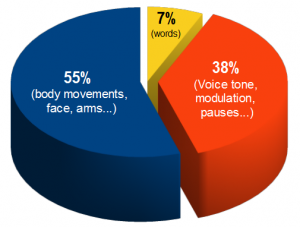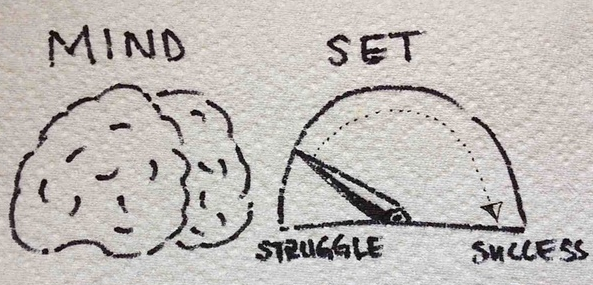 Nearly 93% of communication is non-verbal, meaning it has nothing to do with words. When it comes to communication, what you say really doesn’t matter that much, it’s all about how you say it. But non-verbal communication is not a language in the traditional sense. It’s abstract, complex, and sometimes confusing. Nonetheless, it can be mastered. Below are some 6 keys to sharpen your nonverbal communication skills.
Nearly 93% of communication is non-verbal, meaning it has nothing to do with words. When it comes to communication, what you say really doesn’t matter that much, it’s all about how you say it. But non-verbal communication is not a language in the traditional sense. It’s abstract, complex, and sometimes confusing. Nonetheless, it can be mastered. Below are some 6 keys to sharpen your nonverbal communication skills.
Get some motivation
Learning non-verbal communication is not a feat for the faint hearted. You have to be motivated, and really want to develop your ability to communicate non-verbally. Of course, there’s nothing easy about it. You’ll need to put a lot of time and dedication into it. You also have to set goals, seek feedback about your failures and successes, and practice.
Sharpen your body language reading skills
If you want to master nonverbal communication, the #1 most important thing you can do is learn to ‘read’ other people’s nonverbal cues. You have to be observant and attentive and focused on getting through with this. You’ll want to seek feedback and emphasize on accuracy. That’s why it’s a great idea to seek a learning partner who can help you scale the ladders and actually sharpen your skills.
Convey body language
This is encoding, or rather the ability to communicate non-verbal messages to other people via posture, facial expressions, gestures, and the tone of voice. Research indicates that nonverbal encoding and decoding skills are connected. If you’re very good at reading others' body language, then you’ll find that you also get very good at conveying body language yourself. To be able to make the best out of body language, you need to enhance your ability to authentically express your emotions, and learn to be a good emotional actor as well. Of course, its’ going to take quite some work for you to get there, but there are tons of resources available free of charge on this platform and many other sites on the web. So you really have the treasure trove of learning information you need to get going.
Eliminate micro-expressions
These are those tiny expressions that can be very confusing. Micro expressions betray your intentions and can sometimes even destroy the image you’re trying to convey. You should learn to keep a stable, rock-solid face anytime you’re talking. Start by practicing with a mirror. Look at your image in the mirror then start talking. Focus on any weird micro-expressions on your face while you’re going through particular emotional states. Try to say the same thing again while keeping a stable, solid face. You can do this exercise about 15 minutes daily.
Understand social norms
To send accurate nonverbal messages, you actually have to understand social norms. Of course, different messages can mean different things depending on their context of use. You should understand the communication context to be a more accurate communicator. There’s no way you can master body language without comprehending social situations.
Nonverbal regulator skills
It is very important that you’re able to regulate your nonverbal behavior for social effectiveness. Sometimes, you might have to mask your emotions. If your emotions are very intense, you won’t be active enough to comprehend other’s nonverbal communication.
Learning body language isn’t easy, but it’s all the same doable. You’ll just need to do the work, and be dedicated to the learning. Check my more in-depth body language training resources on this site to get a deeper insight.
Wait… Before you go, I would like to ask you to join me on my journey to making this world a better place. I'm releasing new mentalizing content every week, teaching my students how to use Mentalism and the power of the mind to become more successful and help other people around them. Please join me by subscribing so I can update you about every new lesson I'm releasing… CLICK HERE TO SUBSCRIBE Mentalist Ehud Segev (The Mentalizer) New York City NYC Successful Mind
Mentalist Ehud Segev (The Mentalizer) New York City NYC Successful Mind





